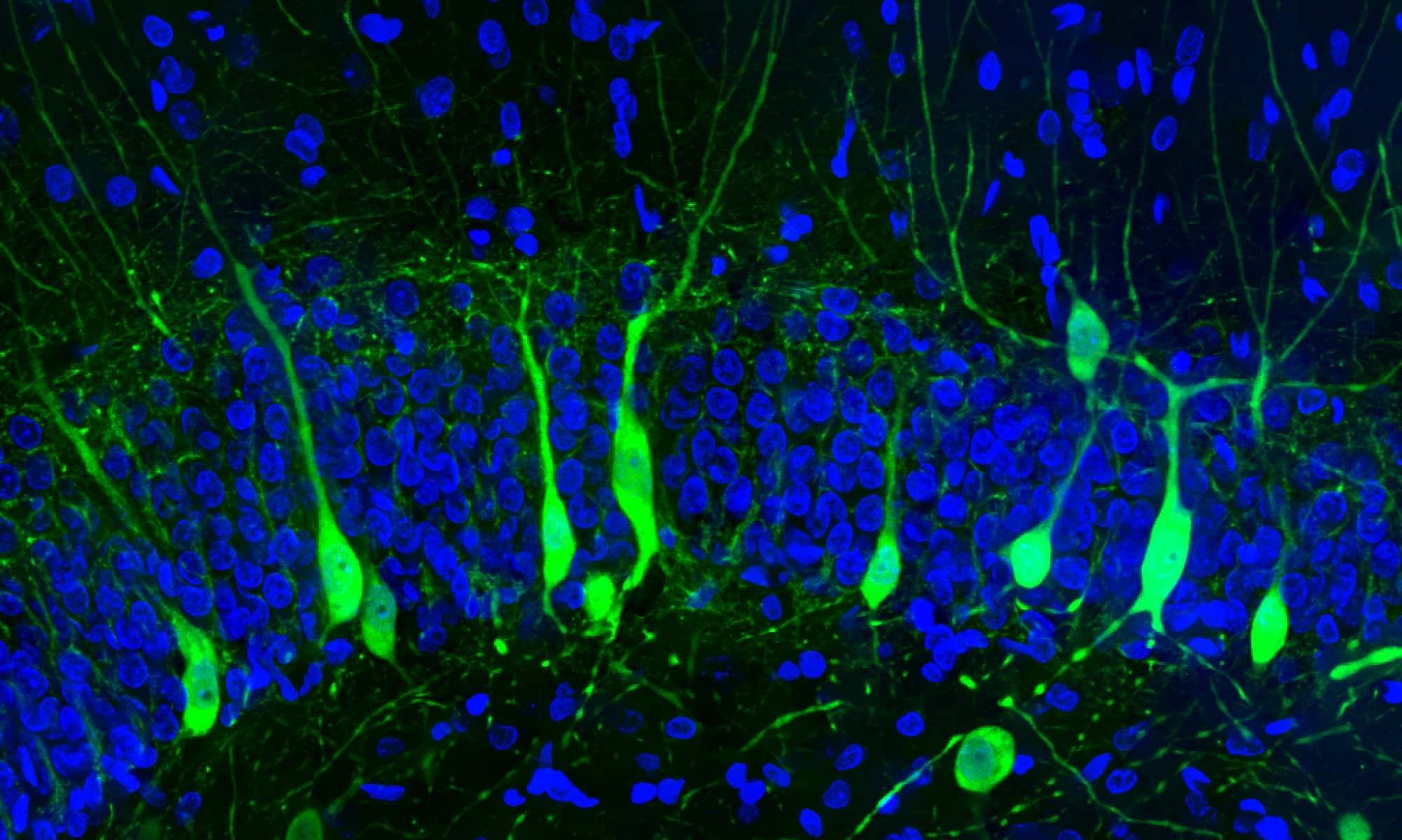Traumatic Brain Injury: Traumatic brain injuries (TBIs) are a significant public health concern, with mild TBIs (mTBIs) make up more than 80% of all TBI cases. While the symptoms of a single mTBI are generally transient, repeated injuries have been linked to prolonged recovery periods, exacerbated symptoms, and certain neurodegenerative diseases. Our lab has a particular interest in the hippocampus following TBIs, as hippocampal-reliant functions like spatial learning and memory are often impaired after a TBI. Preclinical models of TBI utilized in this lab include the lateral impact model and the awake closed head injury (ACHI) model.
The UVic Concussion lab is a clinical research lab that investigates changes in cognitive and sensory motor function in youth, athlete and aging populations with concussion histories. One tool currently being explored as a tool for concussion diagnosis and cognitive intervention is NeuroTracker, a computer-based three-dimensional multiple object tracking cognitive-perceptual training program. The efficacy of NeuroTracker as a cognitive intervention tool for adults with histories of traumatic brain injury is also being explored in partnership with the Victoria Brain Injury Society.
Current Trainees: Dr. Eric Eyolfson (Postdoctoral Fellow), Taylor Snowden (PhD Candidate), Allyson Gross (MSc. Student), Justin Brand (MSc. Student), Jamie Morrison (MSc. Student), Kirsten Suesser (Honours student) Annika Willoughby (Undergraduate researcher), Emma Skaug (Honours student), John Dash (Undergraduate researcher), Victoria Greene (Undergraduate researcher), Madison Yanish (Undergraduate researcher).
Past Trainees: Carl Ernst, Emily White, Ryan, Wortman, Cristina Pinar, Juan Trivino-Paredes, Katie Neale.
Relevant Publications (Since 2017):
1. BR Christie, A Gross, A Willoughby, E Grafe, J Brand, E Bosdachin, H Reid, C Acosta, E Eyolfson. (2023). Assessing Changes in Synaptic Plasticity Using an Awake Closed-Head Injury Model of Mild Traumatic Brain Injury. Journal of Visualized Experiments (191), e64592.
2. T Snowden, H Reid, S Kennedy, R Kenny, A McQuarrie, L Stuart-Hill, MA Garcia-Barrera, J Gawryluk, BR Christie. (2021). Heading in the right direction: a critical review of studies examining the effects of heading in soccer players. Journal of Neurotrauma 38 (2), 169-188.
3. Pinar C, Trivino-Paredes J, Perreault ST, Christie BR. (2020). Hippocampal cognitive impairment in juvenile rats after repeated mild traumatic brain injury. Behav Brain Res., 387:112585.
4. Multiple Object Tracking Scores Predict Post-Concussion Status Years after Mild Traumatic Brain Injury. J Neurotrauma, 37(16):1777-1787.
5. Pham L, Shultz SR, Kim HA, Brady RD, Wortman RC, Genders SG, Hale MW, O’Shea RD, Djouma E, van den Buuse M, Church JE, Christie BR, Drummond GR, Sobey CG, McDonald SJ. (2019). Mild Closed-Head Injury in Conscious Rats Causes Transient Neurobehavioral and Glial Disturbances: A Novel Experimental Model of Concussion. J Neurotrauma, 36(14):2260-2271.
6. A Rapid Neurological Assessment Protocol for Repeated Mild Traumatic Brain Injury in Awake Rats. Curr Protoc Neurosci., 89(1):e80.
7. Wortman RC, Meconi A, Neale KJ, Brady RD, McDonald SJ, Christie BR, Wright DK, Shultz SR. (2018). Diffusion MRI abnormalities in adolescent rats given repeated mild traumatic brain injury. Ann Clin Transl Neurol., 5(12):1588-1598.
8. Meconi A, Wortman RC, Wright DK, Neale KJ, Clarkson M, Shultz SR, Christie BR. (2018). Repeated mild traumatic brain injury can cause acute neurologic impairment without overt structural damage in juvenile rats. PLoS One., 13(5):e0197187.
9. White ER, Pinar C, Bostrom CA, Meconi A, Christie BR. (2017). Mild Traumatic Brain Injury Produces Long-Lasting Deficits in Synaptic Plasticity in the Female Juvenile Hippocampus. J Neurotrauma, 34(5):1111-1123.
10. Shultz SR, McDonald SJ, Vonder Haar C, Meconi A, Vink R, van Donkelaar P, Taneja C, Iverson GL, Christie BR. (2017). The potential for animal models to provide insight into mild traumatic brain injury: Translational challenges and strategies. Neurosci Biobehav Rev, 76(Pt B):396-414.
